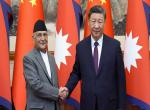Background
Artillery has been a major contributor in all conflicts which the nation has undertaken since independence. It has played important roles in Jammu and Kashmir where there has never been a peaceful moment ever since the Indian Army took on the Razakars in the first war on Kashmir. Artillery played a pivotal role when 1 SIKH was airlifted to Srinagar in October 1947. Four 3.7 inch Howitzers of 13 Field Regiment with gun detachments were airlifted along with the battalion to provide for the firepower in throwing the Pakistan backed Razakars out of Kashmir.
Historic artillery duels have taken place in 1965, 1971 and the Kargil Conflict of 1999. While peace agreement was drawn up after regaining all the territory during the Kargil Conflict, artillery battles continued and then gained momentum during Operation Parakram in 2001. The Indian Artillery brought down effective fire which curtailed infiltration of militants, degraded their communications and caused tremendous disruption to Pakistani activities on the Line of Control (LC). The domination of Indian Artillery was total.
On 23 November 2003 Prime Minister Mir Zafarullah Khan Jamali said that Pakistan would begin a unilateral cease fire from Idul Fitr. India welcomed the decision and cease fire came into effect from midnight of 25 November 2003. The Cease Fire covered the Actual Ground Position Line (AGPL) in Siachen, the LC in Jammu and Kashmir as also the International Boundary.
It is 16 years since the artillery has stopped firing across the LC. But now there may be a need to undertake precision strikes to destroy terrorist camps and the terrorists trying to infiltrate from across the LC.
Current Situation
In the recent years, the situation in Kashmir seems to have taken a turn when we watch militants, duly guided, trained and funded by Pakistan, making their attempts to infiltrate into Kashmir. These bold actions are helped by the ease with which terrorists are training despite winter conditions and infiltrating in groups from the Pakistan Occupied Kashmir (POK). Further, it appears that Pakistan is calling the shots and we are just reacting to their asymmetric manoeuvres. Pakistan undertook the Pulwama attack on 14 February 2019 and the Indian Air Force carried out a reprisal attack on 26 February 2019. This was done against Pakistan’s Balakot terrorist camp in Khyber Pakhtunwa region. It obviously resulted in significant terrorist casualties. Thereafter, Pakistan has been leaving no stone unturned to target India, particularly after Article 370 was abrogated on 05 August 2019.
The latest in the series of artillery retaliations occurred on Sunday, 20 October 2019. A major fire-attack was launched on Pakistani terror launch pads and military positions in the PoK, killing terrorists and some military personnel. It is reported that three terror launch pads in Jura, Athmuqam and Kundalsahi in PoK were targeted and destroyed by artillery fire. Five Pakistani Army personnel were killed in the firing. The Pakistan media reported the strike as ‘intermittent shelling’. Reports in the Pakistani media claim that the Indian Army conducted strikes without any provocation. They claimed that nine Indian soldiers were killed by the Pakistan Army. Our fire was actually in retaliation to the Pakistan artillery fire. While Pakistan targeted civilian areas, the Indian artillery engaged terrorist launch pads.
Merits of using Precision Artillery across the Line of Control
We undertook surgical strikes post the Uri attacks in September 2016, using ground forces. Post the Pulwama terror attacks, the Indian Air Force undertook an aerial strike in February 2019. Both attacks involved deployment of our military personnel, and attributed to their professional skills, both were successful. However, there was always the risk of casualties in the event of surprise being lost. On the other hand, artillery is deployed in own areas and acquires targets by use of satellites and Unmanned Aerial Vehicles (UAV). These targets can then be engaged using precision ammunition to avoid collateral damage.
As reported in Military, Aerospace, and Internal Security by the SP Journal on www.spsmai.com dated 08 November 2019, the M982 Excalibur ammunition, which is extremely accurate, was used for the first time on 20 October 2019. This ammunition is state-of-the-art and would be useful in decimating terrorist camps whenever there is a requirement. The M982 Excalibur is a 155 mm Trajectory Corrected Munition which uses inertial guidance and global positioning systems to engage targets accurately - it has an extremely small Circular Error of Probability of just five metres. This ensures accurate destruction and practically no collateral damage. The ammunition can be fired with our current artillery equipment.
This option requires deliberate considerations to bring serious situations under control. It is pertinent to note that prior to the cease fire in 2003, we could successfully hold elections due to our fire superiority. Following our reaction to their attacks on Parliament, Akshardham Temple and Kaluchak during that period, the Pakistanis had learnt their lessons and had suspended follow-up acts of terror. Pakistan believes in asymmetric warfare which may be countered by engaging targets selectively with artillery. Our strength lies in artillery, which must be used to engage the enemy’s communication centres and logistic lines of communications when needed. These can be degraded and effectively destroyed by accurate artillery firing.
Artillery Equipment on both sides of the Line of Control
On the LC, Pakistani artillery is composed of 105 mm Towed Howitzer, 122 mm D 30 Towed Howitzer, 130 mm Medium Gun and 155 mm Towed Howitzer, as also Mortars. The 155 mm ranges about 22 km and with the Rocket Assisted Projectile it goes to about 30.1 km. The Gun has its problems in maintaining sustained fire and there are few rocket assisted rounds. The 130 mm cannot engage targets in high angle. The 155 mm Norinco Gun from China has yet to prove itself in mountainous terrain. Use of rockets would normally not be preferred in firepower battles on the LC.
In comparison, the Indian Artillery has 105 mm Field Gun, while the primary weapon would be the accurate and consistent 155 mm FH 77 B O 2, commonly known as the Bofors Gun. This Gun has proved its credentials in the Kargil Conflict as also previous firings on the LC and the AGPL. The ammunition of the Gun is extremely effective (it has been reported that Pakistan was looking for the same Gun but is now procuring the Norinco and the 155 mm/52 calibre Turkish T-155 Panter Gun instead). Apart from being qualitatively superior, the Indian Artillery dominates the LC in greater quantities of guns as well as stocked ammunition. As the stocks of the 155 mm indigenously manufactured ammunition, Bi-Modular Charge Systems and electronic fuzes built-up, there would be no difficulty in hitting critical targets and to send a strong message to the Pakistan Army to step back from provoking militancy in Jammu and Kashmir. Introduction of precision weapon systems has further strengthened the firepower along the LC.
The Indian Artillery today has Surveillance and Target Acquisition (SATA) Regiments in the field formations deployed along the LC. With these capabilities, it would be possible to precisely acquire targets in depth and engage these by undertaking corrected observed fire with the UAVs (handled by the Army Aviation) to knock out terrorist camps, destroy bridges, communications centres and areas from where terrorists are launched.
That kind of response would also shift the Pakistan Army’s focus from immune planning and execution of terrorist operations to responding to Indian firepower engagements.
Modus Operandi
At the outset, surveillance, reconnaissance and target information must be methodical and accurate. Surprise is of utmost importance. It must be timed, planned and synchronised with infiltration attempts. Pakistan’s gun positions should also be attacked to limit retaliatory fire. Our commanders on ground should assess the impact and engage accordingly to keep the heat on. Use of firepower should be synchronised with vigorous search operations against the militants in the hinterland.
A few precautions should be taken during these operations. First of all, troops along the AGPL and the International Border must be kept ready for any fire being opened across their front. All guns must be ready to move to alternate positions. There must be alternative locations prepared for move of civilians in rear areas where bunkers with overhead protection must be prepared; the civil administration normally does this task smoothly. Use of artillery may be leveraged by the government authorities to offset Pakistan’s asymmetric advantage. All these are necessities to ensure our ascendancy in counter-terrorist operations.
Conclusion
Modern artillery is poised to find innovative successes in counter-terrorism operations. Use of precision ammunition has added a new dimension to the entire gamut of operations across the LC. New modes of the use of stand-off firepower for effective operation against our Western adversary may be an advantageous option.
(The paper is the author’s individual scholastic articulation. The author certifies that the article/paper is original in content, unpublished and it has not been submitted for publication/web upload elsewhere, and that the facts and figures quoted are duly referenced, as needed, and are believed to be correct). (The paper does not necessarily represent the organisational stance... More >>
Image Source: https://encrypted-tbn0.gstatic.com/images?q=tbn:ANd9GcS67mq809ZPsTDAjPnVI2moWMdUDtOZjL9XNNUbcjVgkc59_BMCoQ&s

.jpg)









Post new comment